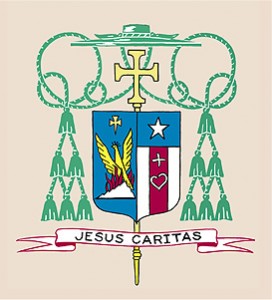 |
| Make an ecard |

Author Archive
HAPPY HOLIDAYS // from LeRoy, Bonnie, & Fergus
Saturday, November 27th, 2010Father Marcial Maciel, Founder, Legion of Christ
Saturday, October 2nd, 2010
“Christ Our King!” . . .
. . . “Thy Kingdom Come!”
(5:20 AM Wakeup Salutation & Community Response – Regnum Christi)
This essay was prompted by an online Associated Press story entitled “Vatican probes disgraced order’s cultish lay group”. (AP – 9/25/10 by Nicole Winfield).
I know something about Catholic religious orders not only because I am a fifteen year veteran of a monastic religious order (1949-1965) but in subsequent careers, I had a great deal of interaction with them relating to service of the poor and advocacy for the powerless.
The use of the word “cultish” in the AP headline piqued my interest. There is a great deal of media interest in the concept of “cults” – perhaps for no other reason than the word sounds dangerous or creepy, or dresses up a story that sells. Let me say right up front: one person’s cult is another’s religion. All religious groups manifest cult-like qualities, some more than others for sure, and some even to extremes, but it is always present. Outsiders look in and shout cult, insiders look out and say this is my religion. Let me also state that movements or causes – farmworker, civil rights, tea party, black power, pro-life, polygamy, gay and lesbian, pro-choice, militia, the list goes on and on, also exhibit cult-like characteristics – again, some more, some less. Outsiders look in and shout extremists or fanatics, insiders look out and say this is our cause, we have rights.
Who is the disgraced order mentioned in the AP headline? That would be the Legion of Christ (founded 1941) and apparently it is “disgraced” because its founder, Father Marcial Maciel, was a drug abuser, a pedophile, a plagiarist, and a financial schemer. He fathered perhaps as many as six children (sexually abused at least two of them) and supported his “families” with funds raised for the Legion. In short, Father Maciel was a fraud and lived a lie.
And yet, in the Catholic Church era of post- Vatican Council II (1965) when religious and priestly vocations have been reduced to barely a trickle, the Legion of Christ in 2010 is actively working in twenty-two (22) countries (including: Mexico, Venezuela, Colombia, Chile, Brazil, Ireland, France, Germany, United States and Canada) has 800 priests and 2500 seminarians. The Legion has built schools, seminaries, universities, etc. Imagine! And more than that: Regnum Christi, a Catholic lay ecclesial movement founded in 1959 by the Legion of Christ, has 70,000 members worldwide. Their motto is: “Love Christ, Serve People, Build the Church”.
You have heard the age-old expression, “God writes straight with crooked lines.” If this is true, the line of the Legion of Christ has to be the straightest in recorded history because the line that Father Maciel drew was the most crooked of them all!
It is difficult to overstate the case. Not even taking into account whether or not Father Maciel was a legitimately ordained priest – having been previously dismissed from two seminaries as a young man, one has to question this – but there is no doubt that he was charismatic, a gifted organizer, a prodigious fundraiser, an embezzler, a plagiarist, a sexual predator and a drug addict. As the Legion of Christ grew, it became a worldwide multi-million dollar fundraising apparatus to support not only the good works of the order but also to buy influence and protection from Vatican officials – no, not bribes exactly, but a generous provider of personal services and financial support.
In fact, Father Maciel became such a revered and close friend of Pope John Paul II (1978-2005), that when eight former minor seminarians from the Legion of Christ who had been sexually abused by Father Maciel, tried to bring canonical charges against him, Pope John Paul refused to allow it. Cardinal Ratzinger (now Pope Benedict XVI) who was in charge of such legal matters told the seminarians: “I am very sorry, but it isn’t prudent (to bring charges) . . . Father Maciel is “very beloved by the pope and has done a lot of good for the church.” What an eternal shame! These men will never receive the justice due them – not even be granted their day in a Vatican court, because Father Maciel had purchased protection insurance. Put another way: his influence with the pope created what church officials deemed was necessary human collateral damage in order to preserve the good name and reputation of the church’s priestly caste.
However, the 65 year-long lie would soon be over. Shortly before the death of Pope John Paul, Father Maciel, age 83, resigned as head of the Legion of Christ – he knew what lie ahead. After Pope Benedict’s election, the pope – privately! – ordered Maciel to sever all relationship with the Legion of Christ and to live a life of prayer and penitence. This would be akin to a local parish priest hearing grade school confessions and granting absolution with the penance: “say three Hail Mary’s and sin no more.” No public explanation was given, and if you can believe this, no explanation was provided to the members of the Legion of Christ or Regnum Christi about why the pope removed and exiled Father Maciel. Perhaps it wasn’t necessary because the religious superiors in charge of the orders probably had known for decades about their founder’s double life. Mercifully, he died three years later in Houston Texas.
According to church teaching, all sins are forgivable, but some are judged to be more serious than others – telling a white lie is not the same moral failing as murdering your neighbor. Using the case study of Father Marcial Maciel – on a moral scale of sinfulness – how would you rank Maciel’s sins of addiction, embezzlement, pedophilia and plagiarism compared to the church’s sins of pedophilia cover-up, protection of the wrong doer, influence peddling, and denying a canonical hearing to the victims of Maciel’s sex abuse who seek justice?
NEW BOOK by Andy Zermeño, Graphic Artist for Farmworker Movement
Monday, July 5th, 2010In 1962, Cesar Chavez asked graphic artist, Andy Zermeño, to create art/graphics for his farmworker movement. From 1962-1970, Zermeno created hundreds of original pieces – including the movement’s eagle symbol – for El Malcriado, posters, calendars, flyers, etc. Forty years later – 2010 – Andy Zermeño has published an extraordinary homemade book – 155 pages, 282 ink drawings, 8 1/2 x 11 page size – of illustrated short stories portraying the development of the farmworker movement.
This homemade edition, autographed by Andy Zermeño – a veritable collector’s item – is available for $35 + $3 postage. Make checks payable to Andy Zermeño and send to: LeRoy Chatfield, 5131 Pleasant Dr. Sacramento CA 95822 OR use Donate link on Website: www.farmworkermovement.us
COVER PAGE / TABLE OF CONTENTS / TEASER PAGES
“What Does Wine Taste Like?” . . . The Answer!
Sunday, July 4th, 2010Not long ago I wrote a piece for the Dialogue about the young woman, a courtesy clerk at Raley’s Supermarket, who carried my wine purchases to the car and in route asked me, “What does wine taste like?”
I don’t know how you would answer such a question, but I was completely addled, stammered some nonsense, and then fussed about the elusive answer all the way home and for days afterwards. What in the hell does wine taste like?
Months later, thanks to a store clerk, not even half my age, who rang me up at Berman’s Liquors on the Lexington side of the Arlington border, I have the answer! He too offered to carry my wine purchases to the car but I was wary and told him why. I asked him how he would answer the question, “What does wine taste like?” “Oh, that’s easy”, he said, “you should have told her: wine tastes as pretty as you look.”
My dear readers, this young man from Boston has his priorities in order and will go far in this world.
The New York Times Obituary Page
Tuesday, June 15th, 2010“Robert J. Wussler, CBS Executive And Aide to Ted Turner, Dies at 73
Peter Keefe, 57, Creator of ‘Voltron’
William L. Murphy, 65, Ex-Prosecutor; Served in Staten Island for Two Decades”
– New York Times: Obituaries, Monday June 14, 2010
For obvious reasons, I do not expect to read my obituary in the New York Times – or anywhere else for that matter.
However, I do have a friend who read his obituary published in the Times and he had a very difficult time explaining to his family and friends how he could, at one and the same time, be very much alive, and yet have published a lengthy obituary about his death – especially with the Times being the “paper of record” and all. It was a paradox, he finally said: two opposites joined together, but both are true.
He made a good faith effort to inform the Times of its error but when he reached the obituary editor, she did not seem much interested in his call, dead or alive. Even though he did not know the deceased, he felt it would be honorable – the right thing to do – to contact the grieving family and acknowledge his concern about the mix-up: I am sorry for your loss, sorry the Times made it worse, and so forth, but it turned out they were not much interested either. What more could he do? In his own way, he had tried to smooth over this unfortunate mix-up, but no one seemed interested, so he dropped the matter and went on living.
I think it likely when my friend passes away – no time soon, I hope – the Times will reprint his obituary, especially because the work has been done and it’s sitting on a shelf, ready to go . . . Wait a minute! Do you think it possible the Times would take the position that because they published the wrong obituary the first time and being the “paper of record” and all, they would correct their error by publishing the obituary they should have published in the first place, the second time around? Where is Judith Miller when you need her?
I digress. My living friend’s obituary is not the subject matter of this piece – it’s about me!
I only read the trashy obituaries in the New York Times – inherited wealth, many marriages, a life marked with bouts of alcoholism and addiction, a corner table reserved at the Algonquin, children out of wedlock, and of course, the inevitable fight among the heirs – fascinating reading. Otherwise, I skim the obit headlines – name, occupation, age – AGE?!
This was the obituary message the Times delivered to me on June 14, 2010 – 73, 57 and 65! Holy Smoke! I am 76. What does this mean? Am I next? Past due? Was I overlooked? Not to worry?
My father was 56 when he passed away. I have no regrets, he said, I have lived a full life, and he meant it. When my hour arrives, what will I say? And will I mean it?
Kansas City
Friday, June 4th, 2010May 29, 2010
Jerry,
As dreams go, it wasn’t much, more like a fragment, but on the rating scale for vivid, it was intense.
It looked like a small motel room with you sitting on the bed, leaning back up against the headboard.
I was sitting in a chair to your right, towards the head of the bed, and Bill was sitting in the other chair, on your left, towards the foot of the bed.
You were looking at Bill and said: we have to go to Kansas City, it is Dolores’ 50th anniversary . . . we have to go.
I said: Jerry, you are asking too much.
End of dream.
Should this situation present itself in the light of day, I would add: I don’t care if it is Dolores’ 50th, I’m not going to Kansas City.
All the best,
LeRoy
THANK YOU MAIL . . .
Monday, May 31st, 2010As a young teaching religious brother in a Catholic high school in the late 1950s, I made up my mind never to expect gratitude – even a thank you – for my efforts, and I have not been disappointed.
A teacher (or an organizer) could live a couple of lifetimes and never receive a thank you, or even an acknowledgement, from those who benefited from the dedication and hard work – not a complaint, just one of life’s realities.
However, when an unexpected expression of gratitude does float by, grab it! You are not likely to see another.
(With permission), here is a response to my thank you note for a contribution made to my Farmworker Movement Documentation Project.
“LeRoy,
It means a lot to me too.
Look at what my life is and has been all of these years.
* I was part of the team that made the decision to have AARP file an amicus court brief that stopped the state of California from kicking hundreds of thousands of people off of their Medicaid. We were part of the winning side on that.
* I was part of the team nationally that organized the campaign to stop the privatization of Social Security. From the late 1990’s through 2005 dozens of us within my organization worked on the issue briefs, the campaign themes, the basic organizing that made this successful campaign a reality. We were able to move people, resources, political messages that framed the strategy that won that fight.
I can name a thousand other political efforts, campaigns, issues that helped specific people as well as big ideas that I have had the honor and opportunity to be part of, to lead, to organize, to contribute to and build.
Sorry to be so corny but I owe you. Every Monday morning you talked to all of us about Cesar, fighting for the poor, winning justice. I listened to every word and every message and every lesson, both ideological and technical that you gave that room full of activists. I learned discipline, organizing, political analysis and the science and art of change.
So, I chose this life and you taught me, you and Chris, what to do and how to do it. And, on a personal note, through all of this and all of the memories and work and sacrifices, I am a very happy person. Not many people can say they were able to be part of their dream. I can and I am not even near finished doing so.
No, LeRoy, I thank you,
Ernie
SUBMISSION DEADLINE for “Syndic” Literary Journal
Thursday, May 27th, 2010I have decided to revive the Syndic literary journal from the 1960s. In keeping with the times, the journal will be published online, not in hard copy. The original Syndic was a publishing platform for high school students, the revived Syndic is open to all who submit their creative work for consideration.
The submission deadline is: Friday, July 16, 2010.
Here is a list of the kinds of creative work I wish to publish in the August 2010 issue of Syndic:
1. Art work – with title and caption or short commentary
2. Photographs – with caption or short commentary
3. Poetry
4. Short Stories
5. Non-Fiction Essays – commentary, true story, criticism, advocacy, etc.
6. Cartoons, Political Cartoons, or Caricatures – with caption
7. Reviews – books, movies, theatre, concerts, events, other
8. Song /Speech – recording in MP3 format.
Other – Items 1 to 8 are offered as suggestions. Any submission appropriate for a literary journal is welcome.
Criteria for Publication: Consideration for publication will include the following guidelines: creative, interesting, thoughtful, well-presented, authentic, insightful, and appropriate for a literary journal.
Submission of material comes with the explicit understanding the work is solely that of the author and not plagiarized.
Please submit items to: Syndic@leroychatfield.us
Question?/Clarification? – Email: syndic@leroychatfield.us
(FOR HISTORY/BACKGROUND ABOUT ORIGINAL Syndic, PLEASE READ NEXT POST: “Syndic” Revisited)
“Syndic” Revisited
Monday, May 24th, 2010I was nuts!
Fifty years ago, I published a literary magazine named, “Syndic”. Twenty-six years-old, an English teacher at a Catholic high school in San Francisco, and I got the bright idea to start a literary journal for high school students. What was I thinking?
Consider this recipe: / 1960s / San Francisco / City Lights Bookstore / North Beach / Ferlingetti / KPFA Berkeley / Art Hoppe / Black Hawk Jazz Club / Fillmore District / St. Elijah’s Catholic Worker Oakland / – combine all ingredients, shake well, garnish with some Ammon Hennacy, and serve.
Why the name “Syndic”? I wanted a greek word, classical sounding, something short, punchy, and a little mysterious sounding. One of its dictionery meanings is: an agent of a university or corporation. I was neither, but it was close enough to fit my idea of what a literary magazine for working class high school students should be named, and besides, no one would know what it meant anyway!
A half-century later, I am hazy on many details, but my recollection is I published at least four issues, and more likely, six. Twelve pages, I think, black and white, coated paper, super glossy – expensive looking! I don’t remember what it cost to publish, or how many copies I had printed for each issue. I don’t remember where the money came from, or who picked up the tab, but strange as this might sound, as a religious brother with a vow of poverty in a Catholic teaching order, money did not seem to be an issue.
The magazine contained essays, poetry, artwork, short stories, and an introduction written by the publisher (me!) – all content was supplied by my high school students, mostly juniors and seniors. I had no trouble finding enough content, in fact just the opposite. I was especially pleased with the front cover art work by Daniel Sheehan, one of my students. (I’m straining now) but one cover was a clown, another a balloon seller, another a dancer, and so forth.
The magazine looked great! I was pleased!
However, “Syndic” did not sit well with some of the older religious brothers in my community. (If I was twenty-six, these older brothers might have been all of forty-five – definitely old to me!) “Syndic” had a dark side, one suggested; another said it was negative; another wondered if high school boys should be permitted to read, let alone, write this kind of material; yet another said, he found it depressing. My religious superior offered no comment.
Flying in the face of these “old” adult religious male celibates with their harsh reviews of “Syndic” was difficult and unnerving. On the one hand I was elated – and pleased with myself – that students were writing and composing and had a serious-minded magazine devoted to publishing their work; on the other hand, I had to live 24/7 with my religious critics, and despite my cocksure demeanor, bordering on arrogance, I was not at all sure of myself. Somehow, I knew the “Syndic” was good for the students, but how much, I did not know, and more importantly, could I afford to buck the political religious establishment wherein I resided?
“Syndic ended”. Nothing dramatic, or even announced. I just stopped doing the work that made it happen. No one said a word – either students or critics. It never happened.
I have decided to revive the “Syndic” . . . I AM nuts!
Cesar Chavez Said . . . May 2010
Saturday, May 22nd, 2010
Cesar Chavez Said . . . May 2010
Cesar Chavez said, “Are we a union or a movement?”
Eliseo Medina said, “We are a union!”
Cesar Chavez said, “We are a movement! We are a union!”
Eliseo Medina said, “ I am leaving!”
Cesar Chavez said, “I am not a labor leader, I will dedicate my next fast to life.”
Dolores Huerta said, “Cesar Chavez was right!”
The Los Angeles Times said, “Cesar Chavez was not a labor leader!”
Eliseo Medina said, “After thirty years, I was right to tell the Los Angeles Times!”
The Los Angeles Times said, “Eliseo Medina is a national labor leader!”
Eliseo Medina said, “I am a national labor leader!”
Kaiser Hospital said, “Dolores Huerta must leave our cafeteria!”
Eliseo Medina said, “Kaiser Hospital must tell Dolores Huerta to leave our cafeteria!”
Dolores Huerta said, “I will not leave!”
Kaiser Hospital said, “Eliseo Medina told us to close the cafeteria!”
Dolores Huerta said, “I am not leaving!”
Mike Casey said: “This is how a company union operates!”
Fred Ross, Jr. said: “This union-busting collusion with Kaiser is shameful!”
Eliseo Medina said: “I am a national labor leader!”
Cesar Chavez said: “Are we a union or a movement?”
“I’m very sorry, but it isn’t prudent . . .”
Tuesday, May 18th, 2010
“I Am Very Sorry, But It Isn’t Prudent . . .”
“It was better for eight innocent men to suffer than for millions to lose their faith.” – Canon lawyer Martha Wegan in a telephone conversation with a clerical sex abuse victim, historian Jose Barba Martin. – New York Times/May 3, 2010.
“It was better for eight innocent men to suffer than for millions to lose their faith”.
On its face, this statement cannot be true. There is no relationship between the injustice of permitting suffering innocence and millions losing their faith. At best, Ms. Wegan’s comment is advice – a long-suffering appeal for sacrifice – one might give to a religious novice, or perhaps it is meant to sugar coat a bitter pill that must be swallowed by religious true believers in order to shield their religious superiors and/or the Church’s priestly caste from prosecution. At worst, it is a throwback to the thousand year-old canon law principle that clerical or church wrongdoing must remain forever secret, known only to church authorities, lest the faithful be scandalized and suffer the loss of their souls. What nonsense!
Pope Benedict XVI, then Cardinal Ratizinger , is more truthful than Ms. Wegan, and pulled no punches, when he informed Bishop Talavera of Mexico that the Vatican would not file charges in this case: “I am very sorry, but it isn’t prudent”. It wasn’t “prudent” because the cleric who would have been charged with sexual abuse was “very beloved by the pope and had done a lot of good for the church.” None of this is about the loss of faith or scandalizing the faithful – not a bit! – it is about protecting the organizational church from accountability and about the Church’s supremely human system of influence-politics – knowing the people in power and ingratiating oneself with them.
In this regard, the Catholic Church is no better or worse, than any multi-national business corporation or NGO, which seeks to avoid criticism or charges of wrong doing especially about sex abuse – cover up by intimidating the accuser and/or trashing their career, or if pinned to the wall, negotiate a no-fault legal settlement on condition of secrecy.
Using this business model to stifle allegations of wrong doing in the Catholic Church is morally unacceptable and certainly hypocritical because the Church holds itself up as a divinely inspired religious and spiritual institution concerned about the eternal salvation of its members. Catholics are taught, and expected to believe, that the Pope – sometimes officially referred to as the Sweet Christ on Earth or the Vicar of Christ – is a direct successor of the Apostles of Jesus, and when elected as the Supreme Pontiff, was entrusted with the Keys to the Kingdom of Heaven. The Catholic Church defines itself as the Mystical Body of Christ.
These are all profoundly mysterious concepts with mindboggling implications that have been reinforced by two thousand years of institutional history and in the face of widespread international clerical sex abuse of children what kind of response should the Church be expected to make?
Thus far, the response has been pitiful – orchestrated cover up by church authorities, reassignment of the offending cleric to another parish, and when pushed to the wall, purchasing secrecy through financial settlements. Oh yes, I have read about the new “zero tolerance” policy of the U.S. Catholic Bishops but I have yet to read that a single U.S. bishop has resigned because of his hands-on involvement in the cover up. Where is the admission of institutional wrong-doing? Where is the institutional accountability?
Dare I ask, “What would Jesus do?” Or has this question been forever forfeited to the Comedy Hour programs to be used as a laugh line? If the pope dares to accept the title of Sweet Christ On Earth, then why not model Jesus? Or is this pope the person to whom Jesus referred when he preached: “They (church authorities) love to sit at the head table at church dinners, basking in the most prominent positions, preening in the radiance of public flattery, receiving honorary degrees, and getting called ‘Doctor’ and ‘Reverend’ . . .” Assuming best case scenario – Pope Benedict XVI wishes to follow in the footsteps of Jesus of Nazareth – what WOULD Jesus do?
Of course I don’t know, but my wish list would include: (1) Discard the lavish trappings and accoutrements of noblemen and royalty inherited from the Holy Roman Empire. Put aside, the gold-threaded liturgical vestments, the bejeweled crosses, rings and chalices, the embroidered medieval headdress and gold crosiers, the ermine capes, silk cassocks and red silk slippers, and dare I add, the designer eyewear! What do any of these symbols of royalty and power and luxury have to do with the teaching of the Jesus of Nazareth? (2) Divest the Church of all ownership and any revenue relating to the Christian shrines of the Holy Land, including Church of the Holy Sepulcher in Jerusalem, Basilica of the Nativity in Bethlehem, and the Basilica of the Annunciation in Nazareth. For hundreds of years, these shrines have been flash points of contention, even armed conflict, among Christian factions, between religious orders, Moslems and Jews – the issue is always the same: ownership, power and money. Pilgrimages and tourism aside, what religious purpose do these theme park edifices serve? How do these shrines promote the Gospel values of living a good life?
Jesus of Nazareth offered us a simple truth about life: all that was necessary, he said, was to love God and to love others, and then went on to show us how: I am the Road, the Truth and the Life. No one gets to the Father apart from me. Cathedrals, basilicas, churches, religious shrines, the Holy Land, are not Gospel values, nor do they promote the simple truth about life advocated by Jesus.Dear Mr. Bishop Olmsted . . .
Sunday, May 16th, 2010“A nun at a Catholic hospital in Phoenix, Arizona was automatically excommunicated after approving an abortion be performed on a patient in order to save the woman’s life . . . Olmsted confirmed McBride was “automatically excommunicated” because of her involvement in the abortion” (NewsCore 5/16/10)
Dear Mr. Bishop Olmsted,
Arizona is much in the news this month, and your contribution has certainly been a major one. Speaking of “automatic excommunication” I trust you will soon release an official announcement of excommunication for those U.S. Catholic bishops and church officials who orchestrated the cover up of more than 10,000 cases of clerical sex abuse involving children.
Thank you for your attention to this matter.
Jesus Caritas,
Catholic LeRoy Chatfield
The U.S. Catholic Bishops Cover-Up of Clerical Sex Abuse
Thursday, April 8th, 2010The U.S. Catholic Bishops Cover-Up of Clerical Sex Abuse
(From 1941 to 1957, I attended Catholic schools and was taught by religious nuns and brothers, and occasionally by priests. During this educational period with seven years spent living in religious community devoted to monastic training and practice, and an additional eight years of serving as a religious teaching brother, I was never sexually abused by a religious person, nor did I know or talk with anyone who had been. Whether this fact disqualifies me from writing about the cover-up of clerical sexual abuse of children, or discounts what I write, I leave to the judgment of others. Good Friday 2010)
“Nobody nowhere, has confronted this crisis that belongs to all of society, in all cultures, in every religion and organization around. Nobody has confronted it better than the Catholic Church” – Archbishop Timothy Dolan, Easter 2010
I don’t know what’s worse for me: reading these delusional and self-serving words of the New York Archbishop at his Easter press conference, or watching him deliver them on YouTube while dressed in exquisite gold-threaded religious medieval robes, wearing a gold and white mitre, a headdress reminiscent of the nobility of the 4th Century, and grasping with his left hand a golden crozier, a 13th Century religious symbol of a shepherd’s crook used in caring for his flock.
However, the archbishop is right about the magnitude of child sex abuse in our country. Consider these recent U.S. statistics: “an estimated 39 million survivors of childhood sexual abuse exist in America today. 30-40% of victims are abused by a family member. Another 50% are abused by someone outside of the family whom they know and trust. Approximately 40% are abused by older or larger children whom they know. The median age for reported abuse is 9 years old. More than 20% of children are sexually abused before the age of 8. Nearly 50% of all victims of forcible sodomy, sexual assault with an object, and forcible fondling are children under 12”. darkness2light.org
Sexual child abuse happens, it is commonplace, it is a fact of life – past, present, and future. Some parents, teachers, counselors, relatives, doctors, priests and countless other professionals who interact with, and have responsibility for children, will sometimes sexually abuse them. Call it sinful or criminal, report it or be silent, prosecute it or not – the net effect of sexual abuse upon children is traumatic and devastating and will be felt for a lifetime.
The Catholic priests of the United States are well represented in the statistics of sexual child abuse. More than 5,000 priests – 4 percent of the clergy – were responsible for 13,000 accusations over a 50-year period. Father Thomas Reese. I don’t fault the U.S. Catholic Church for the existence of child molesters in their ranks, we are talking about human beings after all, how could it be otherwise? What I do fault is the organized institutional cover-up – this is the crime and shame of it! – orchestrated by U.S. Catholic bishops and their legal advisors. Why, in God’s name, would Catholic bishops seek to cover-up the existence of clerical sexual abuse of children, and how did they expect to get away with it? The how is easier to explain.
No-fault insurance settlements, a corporate business model of long standing, was used in the Catholic dioceses of California – and other dioceses as well. The preferred response to clerical child sex abuse was the payment of insurance money on condition of secrecy, without any admission of wrong doing, and the priest-abuser would be transferred to another parish and/or assigned to therapeutic rehabilitation. Case closed.
Ultimately, this financial cover-up – payment of money to victims in exchange for silence – turned out to be a failed policy because over time these no-fault insurance payoffs became so frequent and increased in such dollar amounts that insurance companies were no longer willing to provide coverage, or at such a premium level to make it financially unfeasible for local dioceses to afford. A new self-insurance system was developed to allow dioceses in California and other states to fund the church’s own defense and settlement costs. While this approach paid for another decade of cover-up, it was not enough to prevent the scandal from erupting wholesale in the national media because clerical sex abuse had become so widespread and been left unchecked for so many decades, the cover-up could no longer be contained. To date, the financial cost to the United States Catholic Church has been estimated to be more than $2 billion dollars – and it isn’t over yet!
But why were Catholic bishops committed to such a cover-up in the first place? Two reasons, I think. The first is because of a centuries-old canon law principle known as: “lest the faithful be scandalized”. In other words, bishops could devise secret methods to protect the Catholic hierarchy and priests from suspicion or allegations of wrong doing or corruption – and all this done for the sake of protecting church members from thinking ill of bishops and the clergy. This canon law rationale has been characterized by sociologist Father Andrew Greeley as “self-serving and self-protecting dishonesty.” And so it is.
Here are two examples of how the “lest the faithful be scandalized” works. In his history of the Inquisition, Dr. William Rule quotes 16th Century canon law: “A blaspheming clergyman may pay a deduction from the fruits of his benefice; but whatsoever is done or left undone, he must not be seen to do penance openly, lest the faithful be scandalized at the sight; but if he proves incorrigible, he may be deprived of his living.” Inquisition History (page 63) “He (the clergyman) must not be seen” is the necessary secrecy required to avoid giving the scandal.
And as professor Mark Silk notes in his book “Unsecular Media” (1998), this bankrupt church policy is not ancient history but remains in full force: “To this day, not only does Canon law specify ecclesiastical punishment for clerics who cause scandal by their misbehavior, but also in certain cases, canonical penalties are to be suspended if these cannot be observed ‘without danger of serious scandal or infamy.’ Better to let the punishment go by the board than to scandalize the faithful by publicizing clerical misdeeds.” This church regulation is somewhat akin to our country’s Great Recession policy of suspending law enforcement against banks because they were “too big to fail.”
The second reason why Catholic bishops felt obligated to cover-up clerical sexual child abuse can be traced to Hebrews 7 and Melchizedek. “Jesus, a priest like Melchizedek, not by genealogical descent but by the sheer force of resurrection life – he lives! – a ‘priest forever in the royal order of Melchizedek.’ ”
St. Ambrose, one of the four doctors of the Church in the 4th Century, taught: “Thou art a priest for ever according to the order of Melchizedek.” In my years of Catholic life, St. Ambrose’s teaching had been reduced to the slogan: “once a priest, always a priest” – I must have heard it expressed a thousand times during my Catholic training and education.
In the mid-1500s, the Council of Trent ruled the sacrament of ordination conferred an indelible priestly character and that a return to the lay state was impossible. Laicization may strip a priest from the right to perform authorized priestly functions, but it does not undo the “priestly character”. In Catholic practice, once a male has been ordained into the priestly caste, a binding contract results: in exchange for a life of service and obedience to church authorities, the priest will be financially supported for life and accorded all privileges and protections associated with the authorized status of “priesthood”.
For most of the 20th Century, at least by extension, this teaching about the permanence of the priesthood was applied generally to religious brothers and nuns even though it was understood that in exceptional circumstances, and with great reluctance, the Vatican could dissolve permanently-sworn religious vows and return a nun or brother to the lay state. After the great exodus of nuns and brothers – and many priests – from the Church during the decades after the close of Vatican Council II (1965) and even with the newly-found realization that dispensations from final religious vows were more readily available than had been believed previously, this had no effect whatsoever on church teaching: “once a priest, always a priest”.
Another reason for the cover-up is the historical issue of “church and state”. The Church has never considered itself subject to the state. For centuries – long before the American revolution – the Catholic Church was the state, controlled the state, or was a separate but equal partner with the state. In the United States, the Catholic church tolerates and respects the state but vows no allegiance and brooks no interference from the state about church affairs.
Even the thought of turning over a child-abusing priest to district attorneys for prosecution was unthinkable – not even possible! Such action would have undermined hundreds of years of carefully crafted organizational independence from states and would serve only to undermine its authority and the priestly caste system. After all, the Catholic church is about salvation: sinners repenting, sinners being forgiven, sinners restored to the state of grace to be eligible for eternal salvation; the church does not exist for the sake of this world except to teach its members how to live in order to prepare them for the next.
For all these reasons, the United States bishops worked assiduously to keep secret the wrongdoing of clerics, and they felt justified in doing so, and were it not for the public outrage and private suffering of the victims – and the skill of their attorneys – it would still be secret.
Father Thomas Reese writes: “American bishops excused themselves by saying they made mistakes but were not culpable because of their ignorance. Sorry, this won’t wash. American Catholics wanted some bishops to stand up and say: ‘I made a mistake, I moved this priest to another parish, I did not think he would abuse again, I got bad advice, but I take full responsibility. I am sorry and I resign.’ ” Sad to report, no bishop has taken full responsibility, and no bishop has resigned, and they are institutionally incapable of doing so because they are members of the priestly caste.
How estranged they must find themselves from the Jesus of Nazareth when he preached to them about the dangers of church authorities: “Be careful about following them. They talk a good line, but they don’t live it. They don’t take it into their hearts and live it out in their behavior. It’s all spit-and-polish veneer. . . . Their lives are perpetual fashion shows, embroidered prayer shawls one day and flowery prayers the next. They love to sit at the head table at church dinners, basking in the most prominent positions, preening in the radiance of public flattery, receiving honorary degrees, and getting called ‘Doctor’ and ‘Reverend’ . . . Do you want to stand out? Then step down. Be a servant. If you puff yourself up, you’ll get the wind knocked out of you. But if you’re content to simply be yourself, your life will count for plenty.” (Matthew 23) AMEN.
“WHAT MATTERS MOST . . . “
Thursday, March 11th, 2010“What Matters Most . . .”
“What matters most is how you live your life, not what you have to show for it.” – Jenny Sanford
According to the dust jacket on her book, Jenny Sanford – first lady of South Carolina and ex-wife of philandering Governor Mark Sanford – came to learn this simple truth during her pre-divorce separation.
Simple truth, indeed.
Consider the life of Jesus, a mendicant Jewish preacher living in community, who traveled about the countryside offering a new interpretation – a simple truth – about life. All that was necessary to live a good life, he preached, was to love God and to love others. And to prove he knew what he was talking about, he went on to announce: I am the Road, also the Truth, also the Life. No one gets to the Father apart from me.
Well, you can imagine how this teaching was received by the Jewish High Priests in Jerusalem. For this simple truth, he was indicted for blasphemy, preaching heresy, and scandalizing the faithful. He was put to death by the state.
Jesus left not a trace. He wrote nothing, he owned nothing, he disappeared from the face of the earth – but according to Jenny Sanford the most important thing about the life of Jesus was how he lived, not what he had to show for it.
How simple is that?
DO YOU NEED HELP? ARE YOU OK?
Tuesday, March 9th, 2010Do You Need Help? Are You OK?
No, I’m fine. Thank you. Are you sure? Yes, thank you, I’m sure. With that, she drove off.
It was toward the end of my usual route – a three mile walk that takes me through William Land Park and back through the neighborhood streets to home – that I ran out of gas. This has happened before, but not very often. I would find a place to sit, catch my breath, talk out loud with Clyde a bit, and then tool on home. If we were close enough to Larry’s Gas Mart I would get a small Pepsi and a small bag of Cheetos, which I would split with Clyde. But today I am alone, Clyde is gone for good and feeling drained by my emotional loss or my aging physical condition – no doubt, a bit of both – I begin to drag a bit.
There was no convenient place to sit, so I leaned against a fence. The Toyota Prius was idling in the driveway next door. Several minutes passed before the car slowly backed out and stopped next to me. The young woman – Hmong, I think, and with a small child in a car seat behind her – rolled down the passenger window and asked after me. How nice of her, I thought. Would I have done that? I hoped so.
But the reality was obvious: I was elderly, I probably looked confused and unsure of myself, and I was standing alone on a sidewalk going nowhere. What else could she have thought? I needed help.
Alas, the help I need is not available. Clyde will not return, nor will the energy of my youth. Leaning against this fence, catching my breath, resting a bit will have to suffice.
A Jon Lewis Photo Exhibit: “1966: Cesar Chavez and his NFWA”
Sunday, February 14th, 2010“IT WAS A GREAT PRIVILEGE TO HAVE BEEN ABLE TO PHOTOGRAPH STRONG MEN AND WOMEN STANDING. I’M PROUD TO HAVE STOOD WITH THEM.” – Jon Lewis 1938-2009
This exhibit is a public tribute for the work of Jon Lewis (1938-2009) and an acknowledgement of how much his artistry contributed to Cesar Chavez and his farmworker movement.
A Jon Lewis Photo Exhibit: “1966: Cesar Chavez and his NFWA” – Photo #1
Sunday, February 14th, 2010Without Hope or Expectation
Photographer Jon Lewis joined the farmworker movement to document the lives of striking farmworkers who sacrificed their livelihood in the hope their struggle for social justice would bring a better and more secure life for their children. But when he observed hopelessness, he did not turn away.
A Jon Lewis Photo Exhibit: “1966: Cesar Chavez and his NFWA” – Photo #2
Sunday, February 14th, 2010Rich Soil of California’s Central Valley
The story of Cesar Chavez and his farmworker movement is rooted in the soil of California’s Central Valley, one of the richest agricultural areas in the world. Twenty-five percent of all U.S. agricultural production – as measured in dollars – is produced in the Central Valley of California.
A Jon Lewis Photo Exhibit: “1966: Cesar Chavez and his NFWA” – Photo #3
Sunday, February 14th, 2010Farmworker Women Harvest Table Grapes In Delano
Women did much of the harvesting and packing of table grapes in California’s Central Valley. The scales will show a weight of approximately 26 pounds for a field-packed box of grapes. Paid piece rate – the faster you work, the more you earn – with no toilets, drinking water or rest breaks provided.
A Jon Lewis Photo Exhibit: “1966: Cesar Chavez and his NFWA” – Photo #4
Sunday, February 14th, 2010A Jon Lewis Photo Exhibit: “1966: Cesar Chavez and his NFWA” – Photo #5
Sunday, February 14th, 2010Farmworkers Swamp Table Grapes
Swamping grape boxes from the fields: a farmworker standing on the ground tosses up the 26 pound box, the worker standing on the truck bed, catches the box and stacks it. (Q): How many boxes of table grapes are shipped from the Central Valley of California each harvest season? (A): Enough to build a wall 12 boxes high from Delano to Boston, approximately 3000 miles.
A Jon Lewis Photo Exhibit: “1966: Cesar Chavez and his NFWA” – Photo #6
Sunday, February 14th, 2010A Jon Lewis Photo Exhibit: “1966: Cesar Chavez and his NFWA” – Photo #7
Saturday, February 13th, 2010A Jon Lewis Photo Exhibit: “1966: Cesar Chavez and his NFWA – Photo #8
Saturday, February 13th, 2010Cesar Chavez Assists NFWA Member
The NFWA was built on service to its membership. Countless hours were spent with members helping them navigate social service and government agencies. Members were eligible to participate in the Farmworker Credit Union, the Funeral Burial Program, and in the dream of Cesar Chavez to create a union of farmworkers.
A Jon Lewis Photo Exhibit: “1966: Cesar Chavez and his NFWA” – Photo #9
Saturday, February 13th, 2010A Jon Lewis Photo Exhibit: “1966: Cesar Chavez and his NFWA” – Photo #10
Saturday, February 13th, 2010A Jon Lewis Photo Exhibit: “1966:Cesar Chavez and his NFWA” – Photo #11
Saturday, February 13th, 2010A Jon Lewis Photo Exhibit: “1966: Cesar Chavez and his NFWA” – Photo #12
Saturday, February 13th, 2010California Food Drives for Delano Strikers
Volunteers organized food caravans in major California cities. Oftentimes they would arrive in Delano late Friday afternoon to unload their donated goods at the strike commissary and then attend the weekly union meeting at Filipino Hall where they presented to Cesar Chavez the financial contributions they had collected.
A Jon Lewis Photo Exhibit: “1966: Cesar Chavez and his NFWA” – Photo #13
Saturday, February 13th, 2010Cesar Chavez Speaks With Senator Robert Kennedy
Cesar Chavez believed the politically powerful Kennedy family from Boston carried the torch of social justice for the poor. In the case of farmworkers, he was right. Senators Robert and Ted Kennedy were outspoken public advocates for the rights of farmworkers and they did much to focus national attention on their plight.
A Jon Lewis Photo Exhibit: “1966: Cesar Chavez and his NFWA” – Photo #14
Saturday, February 13th, 2010Cesar Chavez Explains Route for March to Sacramento
Cesar Chavez knew the Delano strike could not be won with picket lines because the growers imported thousands of strikebreakers from the Mexican border. Chavez had to conjure up a way to transform the cause of the farmworker movement into the national spotlight. His first step was to organize a 300-mile march from Delano to the State Capitol in Sacramento to meet with the governor.


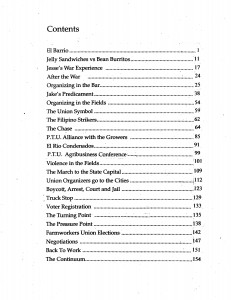
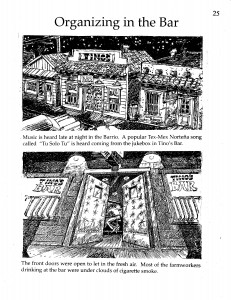
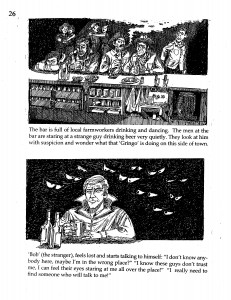
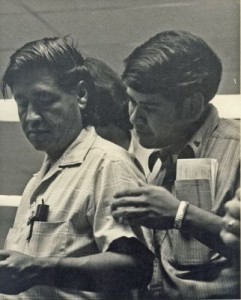
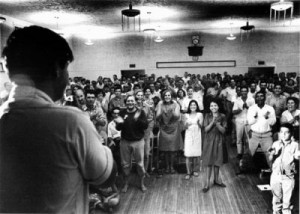
![christmas2[1]](http://www.leroychatfield.us/blog/wp-content/uploads/2010/05/christmas21-300x200.jpg)
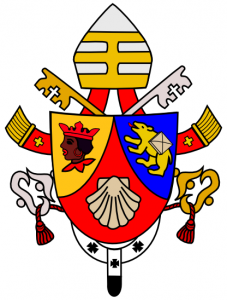

![CHURCH_OF_HOLY_SEPULCHER_FROM_LUTHERAN_TOWER_TB_N123199[1]](http://www.leroychatfield.us/blog/wp-content/uploads/2010/05/CHURCH_OF_HOLY_SEPULCHER_FROM_LUTHERAN_TOWER_TB_N1231991-300x225.jpg)
